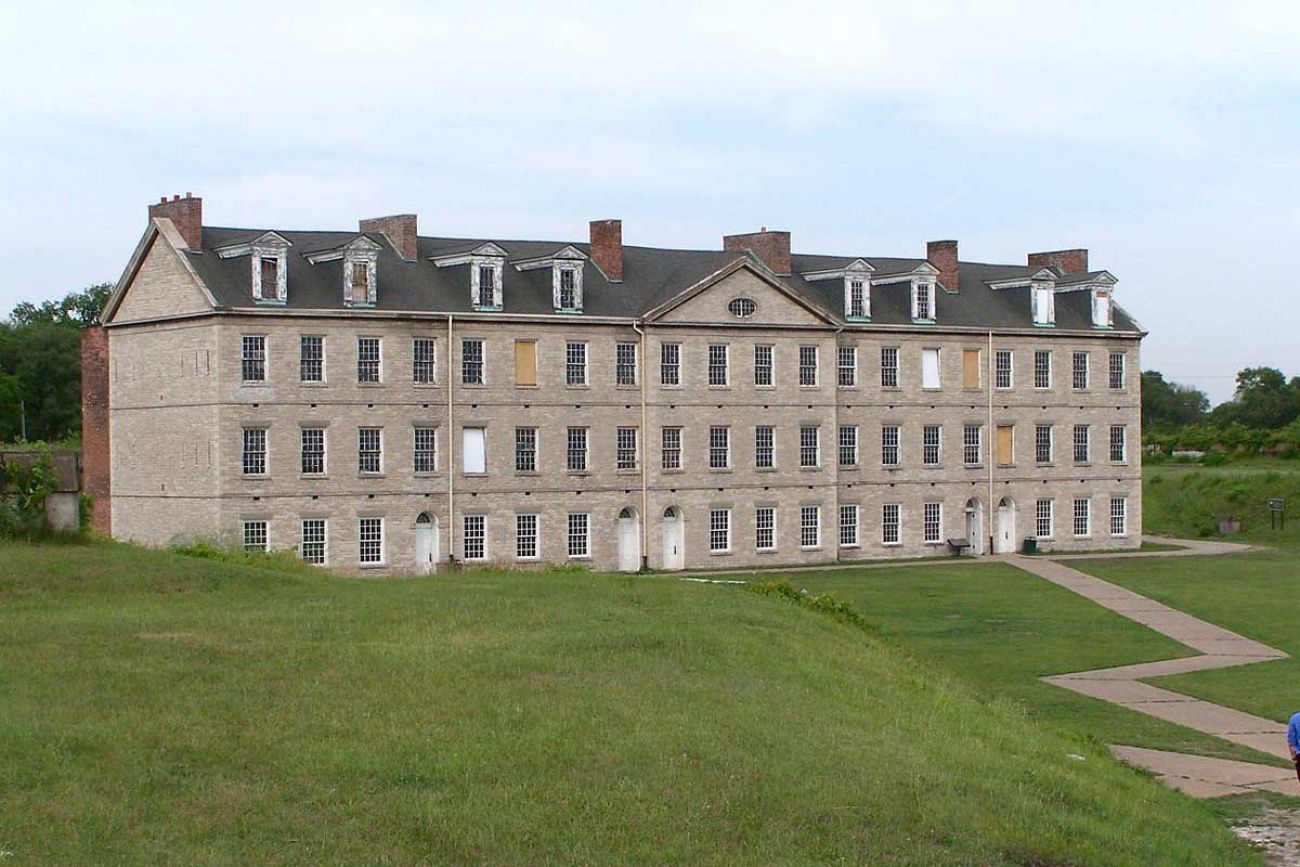Michigan leaders want to make crumbling Detroit fort into national park


A movement is afoot to make the historically rich but deteriorating Historic Fort Wayne in Southwest Detroit into a national park, Bridge Magazine has learned.
As construction is set to begin this fall on the $4.5 billion Gordie Howe International Bridge linking Detroit and Windsor, Ontario, community and state leaders increasingly are focusing on the future of the fort grounds that lie directly to the east.
One idea gaining momentum: Making the fort a national park, said state Rep. Stephanie Chang, D-Detroit.
Proponents believe a law crafted by former U.S. Sen. Carl Levin, D-Detroit, would require the U.S. Department of Interior to grant the land park status if the city signs over the deed to the fort. Such a designation would open federal funding to restore the property, develop it into an attraction and manage it in perpetuity.
Related: A new bridge is dawning in Detroit. Matty Moroun isn’t the only one unhappy.
Related: Along Detroit River, city treasures and rare cars hidden in bubble wrap
Related: A truck ferry offers a rare, gorgeous glimpse of Detroit River
“I definitely, hopefully think there’s some momentum in that direction,” Chang said.
“Personally, I love the idea of a national park. I grew up going to them, and there are a ton of people in and around Detroit who love history, and this is a beautiful site.”
The law, which helped create the River Raisin National Battlefield Park in Monroe, applies to land with historical connections to the War of 1812. While Fort Wayne wasn’t built until more than 30 years later, some of the war’s first skirmishes were on its land.
Levin and aides to Gov. Rick Snyder are involved in the discussions, Bridge has learned from four sources involved in the talks. They’re enamored of a potential tourist destination next to an international border crossing, and liken the concept to Colonial Michilimackinac state park in Mackinaw City near the Mackinac Bridge.
One big sticking point, according to the sources: Detroit Mayor Mike Duggan hasn’t embraced the idea. The city owns all three deeds to the property, and the concept can’t move forward without Duggan’s support.
The mayor is studying the issue and hasn't taken a position, Duggan spokesman John Roach said.
The talks have intensified following a draft of a $235,000 study on revitalizing the fort from a New York firm, HR&A Advisors, commissioned by Michigan’s Economic Development Corp. The state has some jurisdiction over Fort Wayne because it’s on the federal National Register of Historic Places.
Although many of the buildings on the property are deteriorating, the fort itself is well maintained and is well known to generations of southeast Michigan residents as a field trip destination.
The fort is now maintained by volunteers. Over the years, plans have come and gone to revive the property, from bringing in concert acts to hosting car races on the grounds.
Related: Goodbye to Delray, the Detroit enclave residents are getting paid to leave
Photos: Fond memories and burned homes: That’s Delray, the woebegone corner of Detroit
Beyond buy-in from Duggan, numerous logistical hurdles remain to giving the fort national recognition.
River Raisin, the nation’s only War of 1812 battlefield park, was designated as such in 2010 by the administration of Democratic President Barack Obama after years of lobbying by Levin and other Democrats. Republican President Donald Trump perhaps would look far less favorably on such a designation and funding.
And unlike other historic sites, Historic Fort Wayne has served so many uses over the years that it lacks an easy narrative.
The property includes American Indian burial grounds that date back 1,000 years. Construction of the fort started amid tensions with the British in 1842, and ended long after they cooled in 1851.
During the Civil War, the fort was an induction center for soldiers. In the Red Scare, it housed accused communists. During World War II, it was a depot for every Jeep and tank made in Detroit. And after the 1967 riots, the fort housed displaced families.
Besides the fort, the property now houses the Army Corps of Engineers, the Tuskegee Airmen National Historical Museum as well as a warehouse for the Detroit Historical Society.
“We’ve heard the talk about a national park, but nobody knows what will happen,” said Jeremy Dimick, manager of collections for the Detroit Historical Society.
See what new members are saying about why they donated to Bridge Michigan:
- “In order for this information to be accurate and unbiased it must be underwritten by its readers, not by special interests.” - Larry S.
- “Not many other media sources report on the topics Bridge does.” - Susan B.
- “Your journalism is outstanding and rare these days.” - Mark S.
If you want to ensure the future of nonpartisan, nonprofit Michigan journalism, please become a member today. You, too, will be asked why you donated and maybe we'll feature your quote next time!